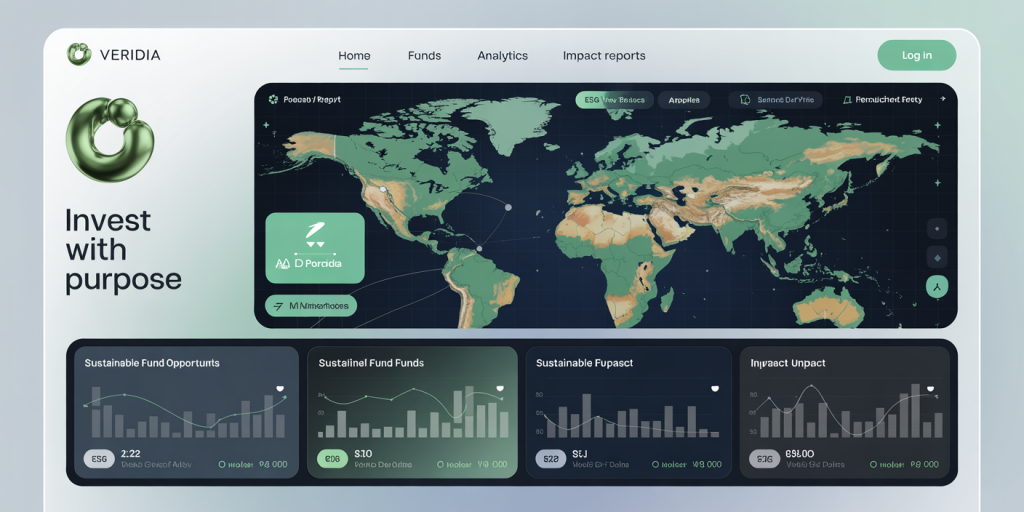ESG Investing: How to Align Your Money with Your Values
Anúncios
In the evolving landscape of finance, Environmental, Social, and Governance (ESG) investing has gained remarkable traction. As more investors seek to reconcile profitability with social responsibility, ESG investing emerges as a compelling approach to deploy capital in ways that reflect ethical beliefs and promote positive global impact. This article explores the fundamentals of ESG investing, practical steps to align investments with values, and what the future holds for this rapidly growing market.

The Rise of ESG: Defining Responsible Investment
Anúncios
ESG investing involves evaluating companies and funds based not only on traditional financial metrics but also on how they address environmental, social, and governance factors. Environmental criteria examine how a company manages natural resources, carbon emissions, waste, and climate change risks. Social criteria focus on relationships with employees, suppliers, customers, and communities, including labor practices and diversity. Governance covers internal systems such as corporate policies, leadership transparency, executive compensation, and shareholder rights.

The surge in ESG investing is driven by growing awareness of climate risks, social inequalities, and corporate ethics. According to the Global Sustainable Investment Alliance (GSIA), global sustainable investment assets reached $35.3 trillion in 2020, a 15% increase from 2018. This trend is bolstered by younger generations, who prioritize sustainability and ethical standards when making financial decisions. Millennials and Generation Z hold an estimated $40 trillion in assets and are more inclined toward ESG-exposed funds, signaling a long-term shift in investment behavior.
Major financial institutions and asset managers have rapidly integrated ESG strategies. For instance, BlackRock, the world’s largest asset manager, announced in 2020 that it would place sustainability at the core of its investment approach, encouraging companies to publish climate risk data and improve governance structures. This institutional endorsement highlights ESG’s growing legitimacy and influence.
Understanding ESG Criteria and Ratings
To effectively align your investments with your values, understanding how ESG factors are measured is crucial. Various rating agencies evaluate companies’ ESG performance, employing frameworks based on publicly available data, corporate disclosures, and independent research. Common ESG rating providers include MSCI ESG Ratings, Sustainalytics, and Refinitiv.
ESG scores typically range from AAA (leader) to CCC (laggard) in MSCI’s system or from low to high risk in Sustainalytics’ methodology. These ratings assess a company’s risk exposure and management ability across environmental, social, and governance domains. However, differences in methodologies can lead to inconsistent results, making it essential to consult multiple sources or choose familiar rating standards when selecting investments.
A practical example is the comparison between two energy companies: Company A operates primarily in renewable energy, has net-zero targets by 2030, and exhibits strong governance practices; Company B relies on fossil fuels, has been involved in environmental fines and labor disputes, and lacks transparency in board structures. ESG ratings would reflect these discrepancies, guiding investors who want to avoid fossil fuel exposure and prioritize corporate responsibility.

Furthermore, investors can evaluate funds based on ESG integration. For example, an ESG mutual fund might screen out companies involved in tobacco, weapons, or coal, while actively selecting firms with superior environmental management and social innovation.
| ESG Aspect | Company A (Renewable) | Company B (Fossil Fuel) |
|---|---|---|
| Environmental | Net-zero by 2030, low emissions | High emissions, environmental fines |
| Social | Positive employee relations, diversity initiatives | Labor disputes, poor community engagement |
| Governance | Transparent board, strong ethics policies | Lack of transparency, governance risks |
Incorporating ESG into Your Investment Portfolio
Aligning your investment portfolio with ESG values requires intentionality and a clear strategy. Start by defining which ESG factors resonate most deeply with your personal beliefs. Some investors prioritize climate action, others focus on social justice or ethical governance. This self-assessment helps narrow down suitable investment vehicles.
Several approaches exist for incorporating ESG elements: Negative Screening: Excluding companies or sectors that violate certain ethical standards (e.g., tobacco, firearms, fossil fuels). This method is straightforward but can limit diversification. Positive Screening: Actively selecting companies with strong ESG performance within industries. For example, choosing the clean energy leader in the utilities sector. Thematic Investing: Targeting funds focused on specific themes such as renewable energy, social equity, or gender diversity. Impact Investing: Allocating capital to projects or companies intentionally created to generate measurable social and environmental benefits alongside financial returns.
Platforms such as Vanguard, Fidelity, and Schwab now offer ESG-focused funds, ETFs, and robo-advisors that facilitate these tactics. For instance, the iShares ESG MSCI USA ETF (ticker: ESGU) tracks US large- and mid-cap companies with high ESG scores, offering a diversified approach aligned with sustainability goals.
Importantly, investors should monitor the financial performance of their ESG investments. Studies have shown that ESG funds can perform comparably or better than traditional funds, particularly over longer time horizons. A meta-study by Morgan Stanley in 2020 found that 85% of sustainable funds outperformed their traditional peers during the COVID-19 pandemic downturn, indicating ESG’s role in risk management.
Real-World Success Stories and Challenges
Several companies exemplify the successful integration of ESG principles with financial success. Tesla, prominently recognized for its electric vehicles and clean energy solutions, scores highly on environmental criteria. Despite volatility in its stock price, Tesla has grown into one of the most valuable automakers globally, demonstrating how sustainability and profitability can coexist.
Unilever provides another meaningful case study. The consumer goods giant focuses on sustainability by reducing waste, advancing gender equality, and source ethically. Its Sustainable Living Brands have grown 69% faster than the rest of the business, accounting for 75% of overall growth in 2018. This underscores how ESG commitments can enhance brand loyalty and financial returns.
However, challenges permeate ESG investing. Greenwashing—the practice of exaggerating environmental claims to attract investors—is a notable risk. For example, some funds initially branded as “green” have later been scrutinized for investments in controversial industries. This necessitates thorough due diligence and skepticism toward overly broad ESG claims.
Additionally, data gaps and regulatory inconsistencies complicate ESG evaluation. The EU’s Sustainable Finance Disclosure Regulation (SFDR) aims to standardize ESG disclosures, yet the US and other markets continue to refine their approaches. Investors should stay informed about evolving regulations and adopt flexible strategies.
| Company | ESG Strengths | Business Impact | Potential Concerns |
|---|---|---|---|
| Tesla | Electric vehicle innovation, renewable energy | High growth, strong market leadership | Volatility, production challenges |
| Unilever | Ethical sourcing, social initiatives | Accelerated growth of sustainable brands | Complexity in global supply chains |
| Greenwashing Risk | Overreliance on marketing claims | Short-term fund inflows, reputational damage | Lack of transparency |
Tools and Resources for ESG Investors
Modern technology and resources have simplified ESG investing for individual investors. Online platforms such as Morningstar and Yahoo Finance now include ESG ratings alongside financial data. Robo-advisors, including Betterment and Wealthfront, offer portfolios customized to ESG preferences, balancing values with risk tolerance.
Several industry frameworks like the Principles for Responsible Investment (PRI) and the Task Force on Climate-related Financial Disclosures (TCFD) guide asset managers and companies to improve ESG reporting transparency. Investors benefit by referencing companies’ adherence to these standards when selecting investments.
For DIY investors, apps like OpenInvest and Swell Investing enable granular control over portfolio components, allowing avoidance of certain sectors or boosting exposure to targeted themes like clean water or social equity.
Educational resources are also expanding. The CFA Institute offers ESG-specific coursework and certifications, and publications such as Harvard Business Review and Bloomberg’s ESG newsletters provide up-to-date insights.
The Future of ESG Investing: Trends and Opportunities
Looking ahead, ESG investing is poised to become a dominant force in global capital markets. The influx of regulatory support, evolving disclosure standards, and growing investor demand will refine ESG evaluation methodologies.
Climate change remains a central focus. According to BloombergNEF, global sustainable fund assets could exceed $50 trillion by 2025, fueled by net-zero commitments and green bonds. Additionally, the integration of artificial intelligence (AI) and big data promises more accurate ESG metrics and risk assessments.
Social factors will likely gain momentum. As social justice movements grow and workforce diversity becomes a business imperative, investors will increasingly examine companies’ social impact in tandem with environmental efforts.
Governance will continue to be scrutinized, especially in light of high-profile scandals like those involving corporate fraud or executive misconduct. Transparent governance structures will be highly valued by both investors and regulators.
In conclusion, ESG investing offers a meaningful way for investors to power market shifts toward sustainability, equity, and accountability. By understanding ESG principles, leveraging reliable data, and making intentional choices, individuals can ensure their money supports the transition to a more just and environmentally responsible economy. As ESG frameworks mature and digital innovation advances, the possibilities for aligning financial returns with personal values will only expand, making ESG investing both a prudent and purposeful path forward.
